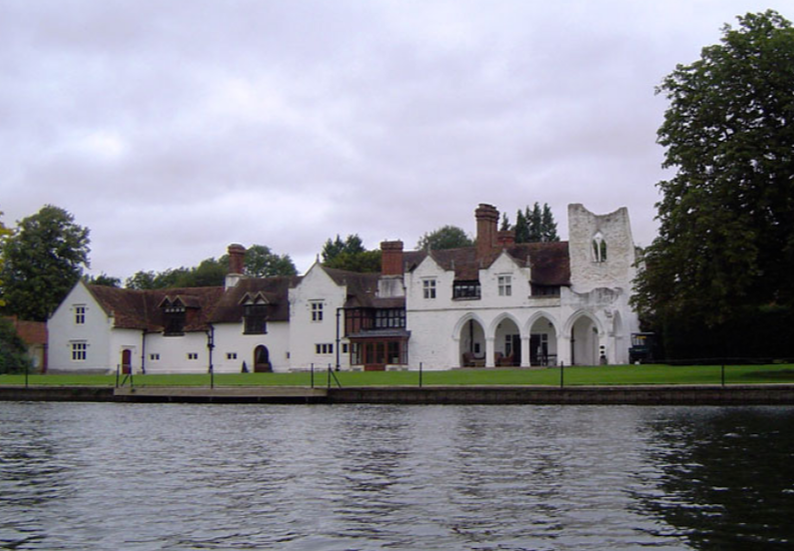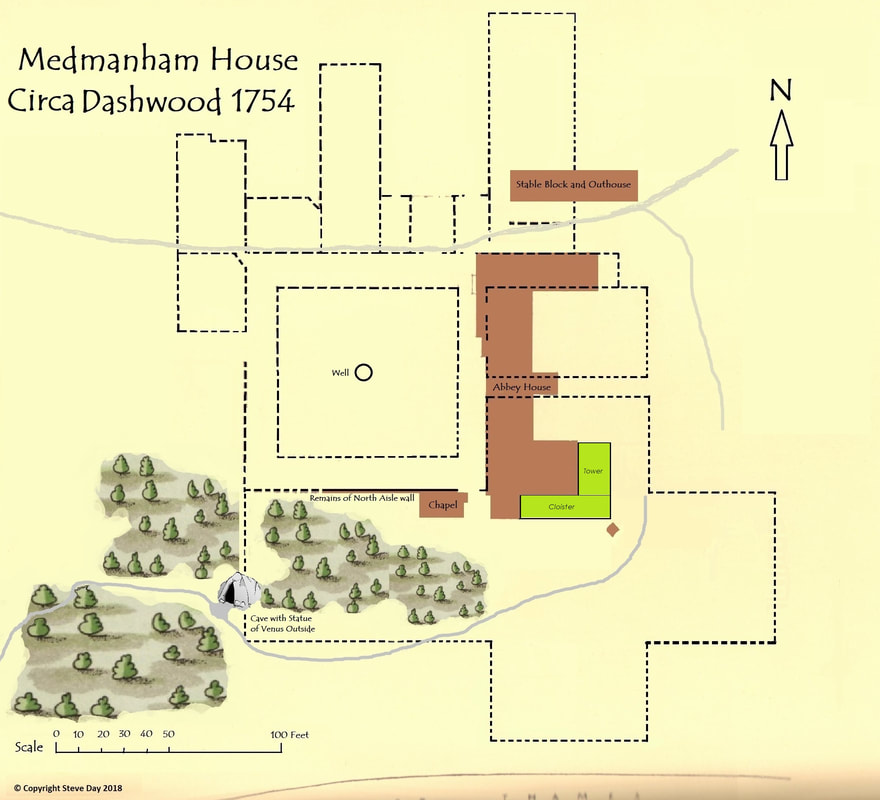Medmenham Abbey
Today If you visit the small village of Hurley in Berkshire and walk along the bank of the river Thames towards Hambleden weir you will come across the picturesque Medmenham Abbey on the opposite side of the river which is more commonly known as the place that Sir Francis Dashwood’s infamous Hellfire club met.
The reality is the building you see today bears no resemblance to the Cistercian Abbey of St Mary’s in its heyday and very little resemblance to the Abbey that Sir Francis Dashwood and his disciples met.
Brown Willis’s account of the Abbey gives a documented account of the condition of the Cistercian Abbey in 1718, and an insight to what Francis Duffield’s Tudor house was like.
Life had been prosperous for the Duffield family, but ten years after Brown Willis’s survey in late 1728 Francis Duffield 4th still a young man known for heavy drinking and his practical jokes as well as foolish pranks died suddenly leaving his five children to be looked after by Elizabeth Mills his housekeeper.
The eldest son Francis Duffield 5th inherited the family home and the Abbey grounds and priory, with his only income coming from the rent of his tenants which very quickly became insufficient for his interests of Gambling, Horses and Women.
In 1751 Francis Duffield 5th, now a Lieutenant in the Horse Guards had little or no interest in the Abbey, moved his Housekeeper Elizabeth Mills and his family out of the Abbey into the nearby smaller Priory allowing him to lease the Abbey to Francis Dashwood.
The first thing Francis Dashwood did after leasing the Abbey was to bring in Nicholas Revett an architect known for the revival of Greek architecture to reconstruct parts of the Abbey. He had the interior of the Mock Tudor house and chapel extensively re-modelled internally and had the main house extended by constructing a tower and cloister both of which were to have the appearance of being derelict.
The plan below show the original layout for Francis Dashwood's Medmenham Abbey.
The black outline shows the layout of the original Cistercian Abbey, before it was demolished by Henry V111 during the dissolution of the monasteries. The areas highlighted in green were the areas that Francis Dashwood had built for the brotherhood.
Around 1777 long after the brotherhood had finally left the Abbey and the Abbey was sold to a Dr Morton, Thomas Langley was finally able to undertake a survey of the remains of Medmenham Abbey which he included in his book “The History and Antiquities of the Hundreds of Desborough, and Deanery of Wycombe” in 1779 some twelve years after the Monks of Medmenham last used the Abbey for their activities.


